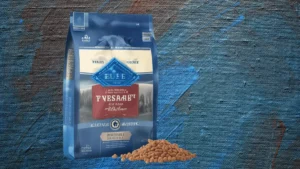Finding the Best Dog Food For Your Pet
Choosing the right dog food is crucial for your pet’s health and well-being. With countless options available, it can be overwhelming to determine the best choice. This comprehensive guide will help you navigate the dog food market and select the most nutritious and suitable food for your furry friend.
Understanding Your Dog’s Needs
Before you start shopping, it’s essential to assess your dog’s specific needs. Consider factors such as:
- Age: Puppies, adult dogs, and senior dogs have different nutritional requirements.
- Size: Larger breeds often require more calories and specific nutrients.
- Activity Level: Active dogs need more energy and protein than sedentary dogs.
- Allergies or Sensitivities: Some dogs may have dietary restrictions or allergies.
Reading Dog Food Labels
Understanding dog food labels is essential to make informed decisions. Look for the following information:
- Ingredients: The first few ingredients should be high-quality protein sources, such as chicken, beef, or fish. Avoid foods with excessive fillers or artificial additives.
- Nutritional Content: Check the guaranteed analysis for the levels of protein, fat, fiber, and carbohydrates.
- AAFCO Statement: Ensure the food meets the Association of American Feed Control Officials (AAFCO) nutritional standards for your dog’s life stage.
Types of Dog Food
There are several types of dog food available, each with its own advantages:
- Dry Food: Convenient, affordable, and helps with dental health.
- Wet Food: More palatable for picky eaters and provides higher moisture content.
- Raw Food: A growing trend, but requires careful preparation to ensure safety and nutritional balance.
- Prescription Diets: Recommended for dogs with specific health conditions.
Tips for Choosing the Best Dog Food
- Consult a Veterinarian: Your vet can provide personalized recommendations based on your dog’s health and needs.
- Read Reviews: Look for online reviews and testimonials from other dog owners.
- Transition Gradually: To avoid digestive upset, transition your dog to a new food gradually over a week.
- Consider Cost: Factor in the cost of the food and your dog’s portion size.
Finding the best dog food for your pet involves careful consideration of their individual needs and preferences. By understanding your dog’s requirements, reading food labels, and following the tips outlined in this guide, you can make informed decisions to ensure your furry friend’s optimal health and happiness.
Keywords: best dog food, dog food, dog nutrition, healthy dog food, dog food reviews, dog food ingredients, AAFCO, dog food types, puppy food, adult dog food, senior dog food, dog allergies, dog sensitivities














